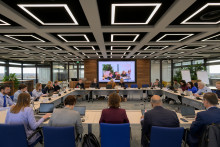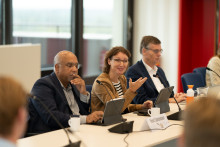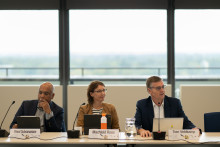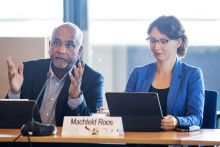The kaderbrief – formerly known as the Spring Memorandum – is an important financial document for the UT. It is in fact the financial framework for the coming years and also determines what the budget will look like. A repetition of moves, that's how you could safely call the discussion about that kaderbrief.
The University Council cited almost the same concerns as six months ago during the difficult budget discussion, but packaged slightly differently: where are the promised strategic personnel plans per unit? How will the Executive Board ensure that the clustered 'building blocks' – or the austerity measures – will already bear fruit this year? And how are realistic income expectations from the second and third money streams ensured?
Fluctuations
According to the council, the 'financial function' must also be strengthened. In the most recent management report, the expected result was significantly higher than expected. Last year around this time , however, the figures were much worse than expected. 'These fluctuations and uncertainty around the budget make it very difficult to make and assess future plans,' said University Council member Catalin Popa. 'And it undermines the trust within our community that has to deal with reorganisations and acute measures.'
UT vice-president Machteld Roos said she understands the impact on the community. 'But we all have to deal with this financial situation. It is better to be ahead of schedule than behind the facts. Even if it causes stress. We are still building our reserves to achieve a healthy status quo.'
Eleven points of attention
The University Council formulated a total of eleven points of concern or attention. The vast majority of these related to previous discussions. The Executive Board had made all kinds of promises last January. And that is precisely what the University Council wanted to remind the Executive Board of when the financial framework for the coming years was being discussed.
This financial framework has far fewer fluctuations than in recent years. At that time, the UT had to hit the brakes hard in its spring memorandum, with cuts of tens of millions of euros. The forecasts for the coming years are now more stable: the student influx will remain virtually the same until 2030. Revenues also remain around 500 million euros on an annual basis, while the workforce – as was also forecast in previous spring memorandums – will continue to shrink.
Formalities
In terms of financial content, there was therefore relatively little food for discussion. As a result, the meeting ended in a squabble about formalities, especially when it came to the strategic personnel plans. The University Council expressed its frustration about the lack of those plans and the promises of the Executive Board – for the umpteenth time – that those plans would be forthcoming.
Vice-president Roos countered that there are indeed strategic personnel plans in the pipeline, that they have also been discussed in the university's operations committee, and that the University Council will receive an 'overview containing conclusions and a quantitative analysis' before the summer. 'We don't make these plans because we want to send them to the University Council. We make them because we think they are important and they help us in budgeting and steering the organisation.'
However, the council was not satisfied with that. 'We were supposed to receive strategic personnel plans, not an overview. We have agreed on that,' says Popa. In the end, University Council chairman Herbert Wormeester smoothed out the folds: first the council wants to see something on paper from the Executive Board, and then – in September – continue the discussion.
After other points had been touched upon – again mainly a motley collection of formalities and procedural sore points – chairman Wormeester closed the meeting. The meeting will continue next Wednesday and it is up to the council whether or not to approve the financial framework.







